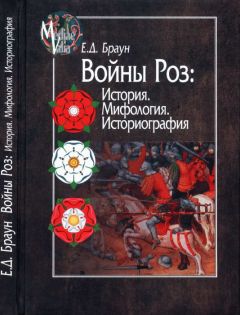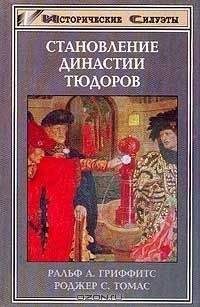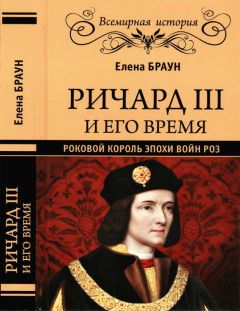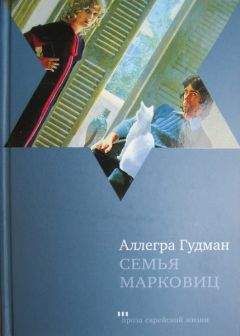Richard III: Loyalty, Lordship and Law. L. 1986.
Richard III: A Medieval Kingship. L., 1993.
Richmond С. 1485 and All That, or What Was Going at the Battle of Boswortd // Richard III: Loyalty, Lordship and Law / Ed. by RW. Hammond. L., 1986. P. 172–191.
Richmond С. Quantitative Methods: The Nobility and the Wars of the Roses // Journal of Historical Sociology. Oxford — N.Y., 1996. Vol. IX. № 4. P. 395–409.
Richmond С. Religion and the Fifteenth-Century English Gentleman // The Church, Politics and Patronage in the Fifteenth Century. Gloucester — N.Y., 1984. P. 193–208.
Richmond С. The English Gentry and Religion, с 1500 // Religious Belief and Ecclesiastical Careers in Late Medieval England. Woodbridge, 1991. P. 121–151.
Robertson M.L. “Sires, remember we are neyghboures…”: English Gentry Communities in the Fifteenth Century // Journal of British Studies. Chicago, 1995. Vol. XXXIV. № 1. P. 112–118.
Rollison D.A. Commonwealth of the People: Popular Politics and England's Long Social Revolution 1066–1649. Cambridge, 2010.
Rosental J.T. Patriarchy and Families of Privilege in Fifteenth-Century England. Philadelphia, 1991.
Roskell J.S. Parliament and Politics in Late Medieval England. L., 1981. Vol. I–II.
Ross C.D. Edward IV. Berkley — N.Y., 1974.
Ross C.D. The Reign of Edward IV // Fifteenth-Century England 1399–1509. Studies in Politics and Society. Barnes, 1972. P. 45–66.
Rossiter A.P. Angel With Horns: The Unity of Richard III // Shakespeare: The Histories / Ed. E.M. Waith. Englewood Cliffs, 1961.
Rowney I. Resources and Retaining in Yorkist England: Lord Hastings and the Honor of Tutbury // Property and Politics. Essays in Later Medieval English History / Ed. by A.J. Pollard. N.Y., 1984. P. 139–151.
Rowse A.L. Bosworth Field and the Wars of the Roses. L., 1966.
Royle T. Lancaster Against York: The Wars of the Roses and the Foundation of Modern Britain. N.Y., 2008.
Scofield С. The Life and Reign of Edward IV, King of England and France and Lord of Ireland. In 2 vols. N.Y., 1967.
Scott Walter. Anne of Geierstein; or The Maiden of the Mist. By the Author of “Waverley”. In 3 vols. Edinburgh — London, 1829. Vol. I (II–III).
Simons E. The Reign of Edward IV. L., 1966.
Smith A. Litigation and Politics: Sir John Fastolf's Defense of His English Property // Property and Politics. Essays in Later Medieval English History / Ed. by A.J. Pollard. N.Y., 1984. P. 58–74.
Stone L. Family, Sex, and Marriage in England 1500–1800. L., 1977.
Storey R.L. The End of die House of Lancaster. Gloucester, 1986.
Strickland A. Lives of the Queens of England. In 2 vols. L., 1885.
Stubbs W. The Constitutional History of England in Its Origin and Development. In 3 vols. Oxford, 1897.
Sutton A.F. “A Curious Searcher for Our Weal Public”: Richard III Piety, Chivalry, and the Concept of the “Good Prince” // Richard III: Loyalty, Lordship and Law / Ed. by P.W. Hammond. L., 1986. P. 61–78.
Tender D.R. Henry VI. London, 1976. The Church, Politics and Patronage in the Fifteenth Century England / Ed. by B. Dobson. Gloucester — N.Y., 1984.
The English Court: From the Wars of the Roses to the Civil War. L., 1987.
Tomson J.A. The Transformation of Late Medieval England, 1370–1529. N.Y;L., 1983.
Tuck A. Crown and Nobility 1272–1461 (Political Conflict in Late Medieval England). Totowa, 1985.
Turner S. History of England During the Middle Ages. L., 1823.
van Cleave A.M. The First of the Tudors: A Study of Henry VII and His Reign. L., 1981.
Wagner J.A. Encyclopedia of the Wars of the Roses. Santa-Barbara, 2001.
Walpole H. Historic Doubts on the Life and Reign of King Richard the Third. L., 1768.
Walters G. Rewriting History: the Portrayal of Richard HI. Gloucester, 2000.
Watt D. “No Writing for Writing's Sake”: The Language of Service and Household Rhetoric in the Letters of Paston Women // Dear Sister. Medieval Woman and the Epistolary Genre. Philadelphia, 1993. P. 122–138.
Webster B. The Wars of the Roses. L., 1998.
Wedgwood J., Holt A. History of Parliament. Biographies of the Members of the Commons House. 1439–1509. L., 1936.
Weir A. Lancaster and York: The Wars of the Roses. L., 2011.
Weir A. The Princes in the Tower. L., 1992.
Whitaker E. Reading the Paston Letters Medically // English Language Notes, 1993. Vol. XXXI. № 1. P. 19–27.
Williamson A. The Mystery of the Princes. Gloucester, 1978.
Wolffe B.R. Henry VI. L., 1983.
Wolffe B.R. The Personal Rule of Henry VI // Fifteenth-Century England 1399–1509. Studies in Politics and Society. Barnes, 1972. P. 29–44.
Wood C.T. Queens, Quaens, and Kingship: An Inquiry into Theory of Royal Legitimacy in Late Medieval England and France // Order and Innovation in the Middle Ages. Princeton, 1987. P. 409–431.
Wood Ch.T. Richard III, William Lord Hastings and Friday the Thirteenth // Kings and Nobles in the Later Middle Ages / Ed. by R.A. Griffiths & J. Sherbone. N.Y, 1986. P. 130–154.
Workman K.J. Manorial Estate Officials and Opportunity in Later Medieval English Society // Viator, 1995. Vol. XXVI. P. 223–240.
Автограф переписки Пастонов Манор Стонор, современный вид Генрих VI. Неизвестный художник Эдуард IV. Неизвестный художник Елизавета Вудвиль. Неизвестный художник Ричард III. Портрет начала XVI в. Неизвестный художник Генрих VII. Неизвестный художник Елизавета Йорк, супруга Генриха VII. Неизвестный художник Свиток Эдуарда IV (1461), возводивший его родословную к королю Артуру и другим культовым монархам — классический пример графической пропаганды Ричард III и Генрих VII. Гравюра Уильяма Фейторна. 1640 гг. Ричард III показан стариком с символически сломанным скипетром * * *
Мор на 12 лет завышает возраст Эдуарда IV, неверно указывает имя герцога Бэкингема, путает даты и искажает порядок событий, в подробностях рассказывает о событиях, не имевших места в действительности, например, описывает якобы состоявшееся в соборе св. Павла венчание Эдуарда IV и Елизаветы Вудвиль и т.д.
“My mistress your mother… bade me write to you that she hath very knowledge by a true and trusty man, whose name she shall tell you by mouth at your next meeting…” // The Paston Letters / Ed. by J. Warrington. N.Y;L., 1956. Vol. I. P. 13. (Далее — The Paston Letters)
“I thank you for the letter that ye sent me, for by my troth my mother and I were not in hearts ease from the time that we wist of your sickness, till we wist of your amendind” // The Paston Letters. Vol. I. P. 3.
Список людей, пользовавшихся покровительством Пастонов, представлен в приложениях.
Список корреспондентов Пламптонов, пользовавшихся покровительством этой семьи, содержится в приложениях.
Хронологическое распределение документов таково: по одному письму приходится на 1432, 1450, 1455, 1457, 1460, 1461 гг. На 1462г. приходится уже 7 писем, на 1463–4, на 1464 г — 1, на 1465–4; далее количество документов, приходящихся на каждый год, возрастает.
Список «свитских» Томаса Стонора приводится в приложениях.
“The country is always ready to come, both footmen and horsemen, as soon as they will be send for” // The Paston Letters. Vol. I. P. 158.
“And if ye will do the same, we for the ease of you both and the rest of the country will take the matter upon us” // Plumpton Correspondence. P. 4.
“If the matter sould be tryed by all his neighbours, we deem the country should be found of his appeal” // Plumpton Correspondence. P. 24.
Например, кузина Джона Пастона — Алиса Огарт (Ogard) — во время судебного разбирательства, затрагивавшего ее земельные интересы, обратилась к Джону Пастону с просьбой приехать к ней и «присоединиться к ее совету», чтобы помочь ей выиграть дело. The Paston Letters. Vol. I. P. 116.
Материалы имеющихся в нашем распоряжении источников позволяют установить, что денежные займы между родственниками были в среде джентри XV в. вполне обычным делом. Денежным расчетам родственников посвящена весомая часть писем архивов Пастонов, Стоноров и Пламптонов. В частности, дядя Уильяма Стонора Уильям Харлстон (Harleston) посвятил значительную часть адресованному племяннику письма заверениям, что он вернет долг в С марок «как сможет скорее… но в любом случае не позже 26 января». См.: Stonor Letters and Papers. P. 354.
:В качестве наиболее характерного примера можно привести следующую фразу из письма Джона Пастона-младшего, адресованного его матери. «Также, матушка, я прошу, чтобы мой брат Эдмонд поехал в Мерлингфорд, Окснед, Пастон, Кромнер и Кайстер и вступил во владение всеми этими землями от моего имени» // The Paston Letters. Vol. II. P. 222.
В частности, в цитированном выше письме Джон Пастон не только просит мать проследить, чтобы его брат Эдмонд вступил во владение землями от имени старшего брата, но и дает целый ряд рекомендаций, касающихся управления перечисленными манорами. См.: The Paston Letters.
Например, в письме герцога Норфолка, адресованном его кузену Джону Ховарду, содержится следующее предложение. Поскольку герцог тяжело болен и не может исполнять свои обязанности маршала, то не желает ли его родственник занять эту должность на время его болезни за соответствующую плату. См.: The Paston Letters. P. 44.





